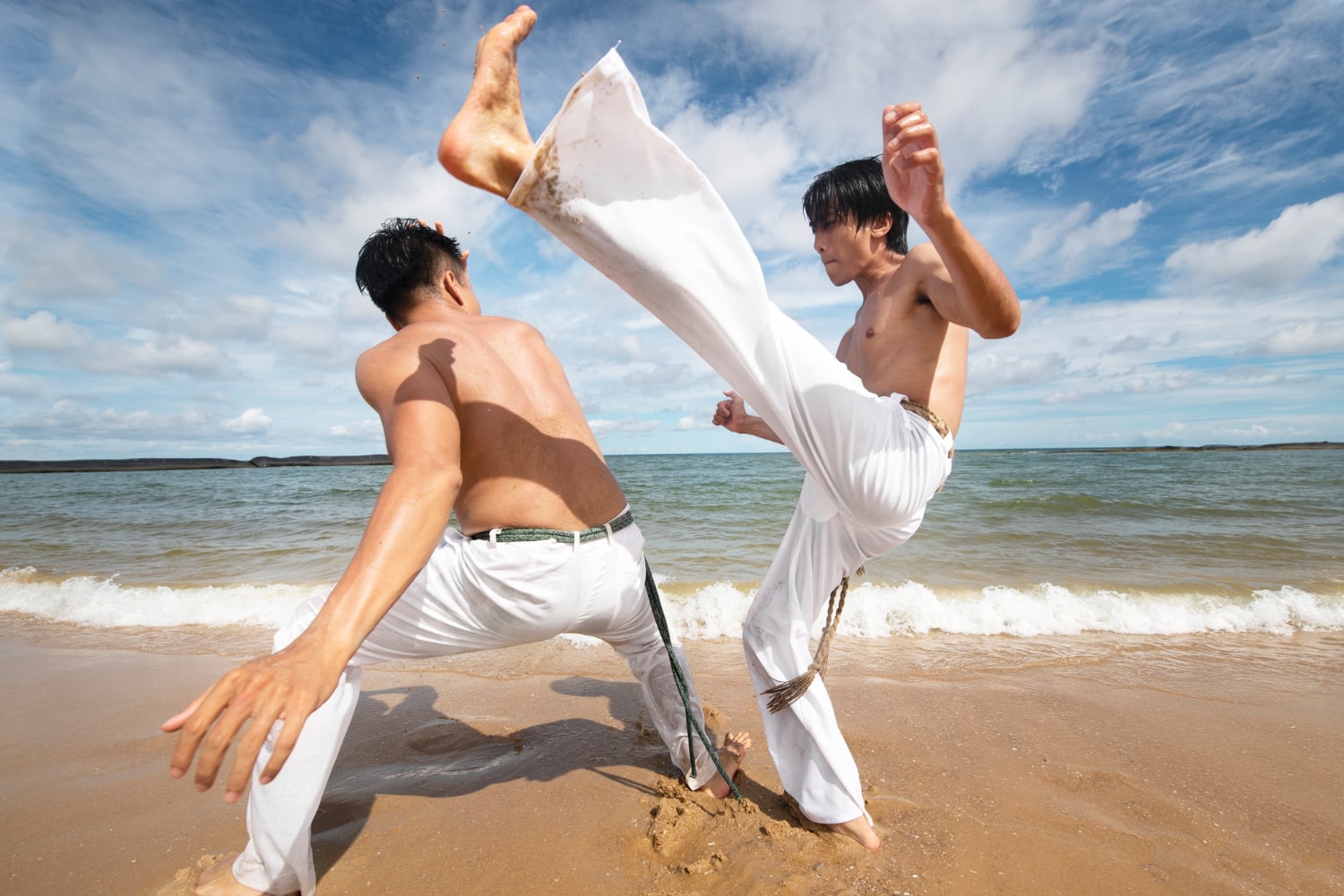Capoeira is more than just a martial art – it is a blend of dance, music, and philosophy deeply rooted in culture and history. This unique practice combines acrobatics, rhythm, and combat techniques, captivating audiences with its grace and energy. While many see capoeira as an impressive dance, behind it lies a centuries-old story of resistance and the fight for freedom. Today, capoeira is known worldwide, yet it remains true to its traditions and cultural spirit. Here are some fascinating facts about capoeira that you might not know.
- Capoeira originated in Brazil in the 16th century among African slaves brought from various regions of Africa. It became a way to disguise fighting skills as dance to avoid punishment from slave owners. This art form helped slaves stay physically prepared and ready for potential escape.
- There are several theories about the origin of the word capoeira, one of which links it to a Portuguese term meaning “thicket” or “clearing.” These were the places where slaves secretly practiced their techniques away from overseers. Another theory suggests that the word has African linguistic roots.
- Capoeira is not only about kicks and acrobatics but also about music, which plays an essential role in every game. Movements are performed to the rhythm of traditional instruments, with the berimbau being the most important — a musical bow with a single string and a gourd resonator. The music sets the pace and mood, defining the character of the game.
- In capoeira, a fight is called a game, and it is based on improvisation and interaction between two players. The goal is not to harm the opponent but to display agility, cleverness, and mutual respect. It is a dialogue through movement where every gesture responds to the partner’s actions.
- For a long time, capoeira was banned in Brazil because authorities viewed it as a threat due to its association with rebellions and criminal groups. Practitioners had to train in secret, and masters often used pseudonyms to hide their identity. It was only in 1937, thanks to Mestre Bimba, that capoeira was legalized and began to be taught officially.
- There are two main styles of capoeira: angola and regional, each with distinct characteristics. Angola is more traditional and slower, focusing on strategy and deception, while regional is faster, more dynamic, and acrobatic. Modern schools often blend elements of both styles.
- A key ritual in capoeira is the roda, a circle formed by participants. In the center, two capoeiristas play while others sing and play instruments. The roda creates a unique atmosphere of unity, support, and friendly competition.
- Unlike many martial arts, capoeira does not have a universal belt system, but some schools use colored cords called corda to signify a student’s level. The colors vary depending on the school’s tradition. Respect for elders and experienced players is valued more than rank.
- Songs performed during the roda carry deep meanings, often telling stories about capoeira’s history, its heroes, or offering moral lessons. They are sung in Portuguese with African-inspired rhythms and melodies. Singing is considered a fundamental skill for every capoeirista.
- In 2014, capoeira was recognized by UNESCO as part of the Intangible Cultural Heritage of Humanity. This acknowledgment highlighted capoeira’s importance as a symbol of struggle, culture, and identity. Today, capoeira is a global phenomenon, not just a Brazilian treasure.
- Capoeira schools exist in many countries, gaining popularity as a form of physical development, cultural exchange, and self-expression. Training improves strength, flexibility, coordination, and musical abilities. Its unique and dynamic nature attracts people of all ages.
- In Brazil, capoeira is widely used as a tool for social integration and youth education in underprivileged areas. Many organizations offer free classes to children, helping them stay away from street dangers and teaching discipline and respect. Capoeira has become a force for positive social impact.
- Many capoeira moves have names that reflect their nature or origin, such as the attack “martelo,” meaning “hammer,” or the defensive move “esquiva,” meaning “dodge.” Each movement carries its own history and symbolism. Learning capoeira is not only about mastering techniques but also about embracing a rich cultural tradition.
- The typical capoeirista outfit includes white pants and a shirt with the school’s emblem. White symbolizes purity of intention and respect for tradition. Following the dress code is mandatory during official events.
- Capoeira emphasizes not only physical fitness but also mental skills like quick reflexes, strategic thinking, and the ability to anticipate an opponent’s moves. The game in the roda is often compared to chess, where every move matters. It is truly an art of balancing body and mind.
These incredible facts about capoeira reveal it as a multifaceted cultural phenomenon that goes far beyond simple martial arts or dance. It is a form of cultural expression, a path to harmony between body and spirit, and a symbol of freedom and unity. Capoeira continues to evolve, inspiring new generations while preserving its rich traditions. It stands as a testament to how art can embody resilience, community, and the strength of the human spirit.





